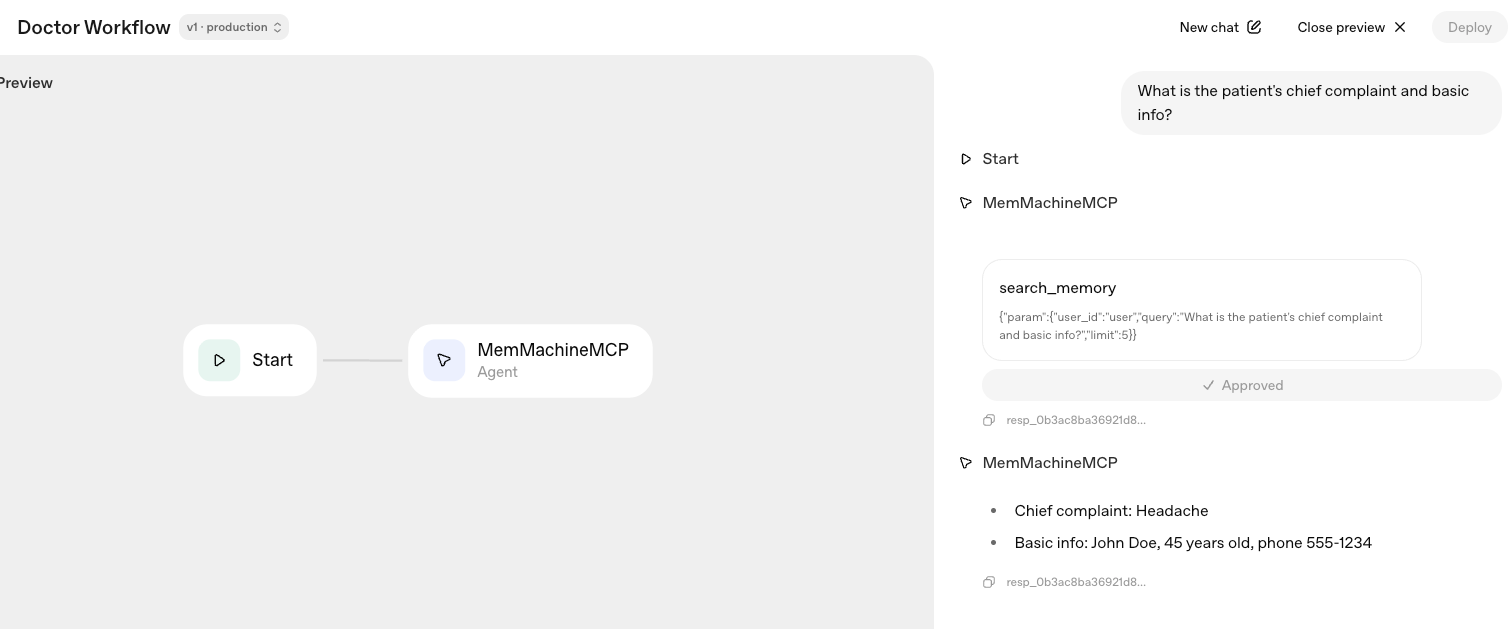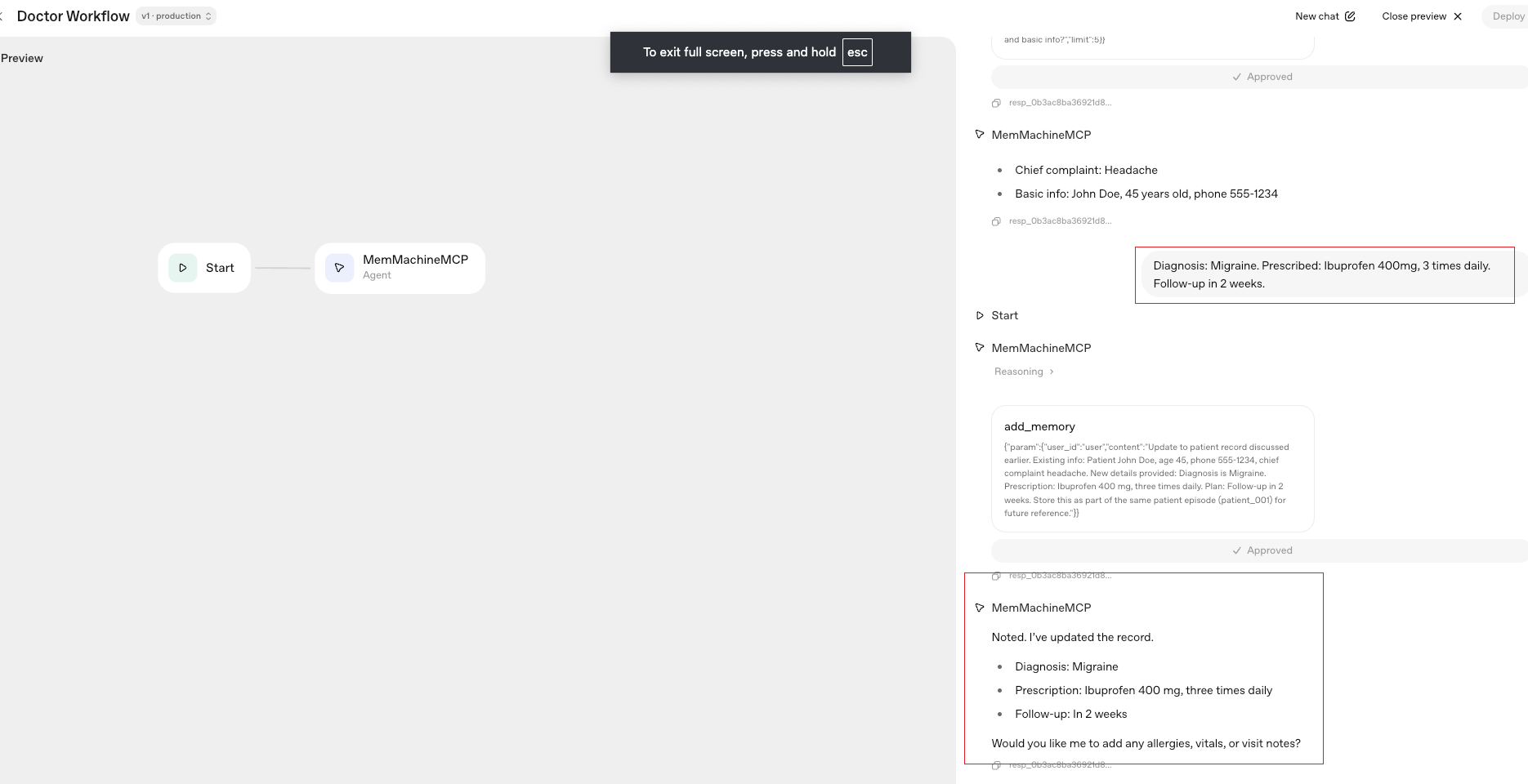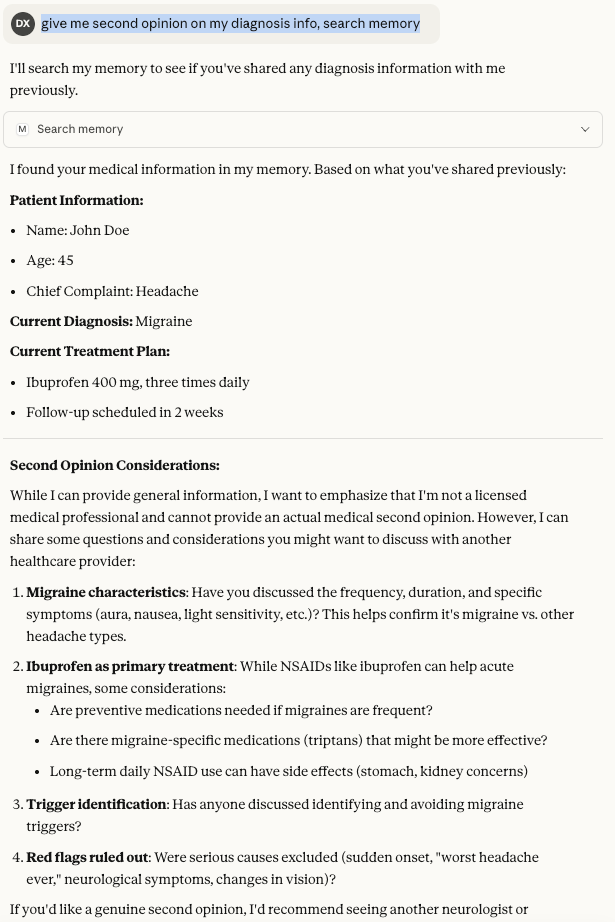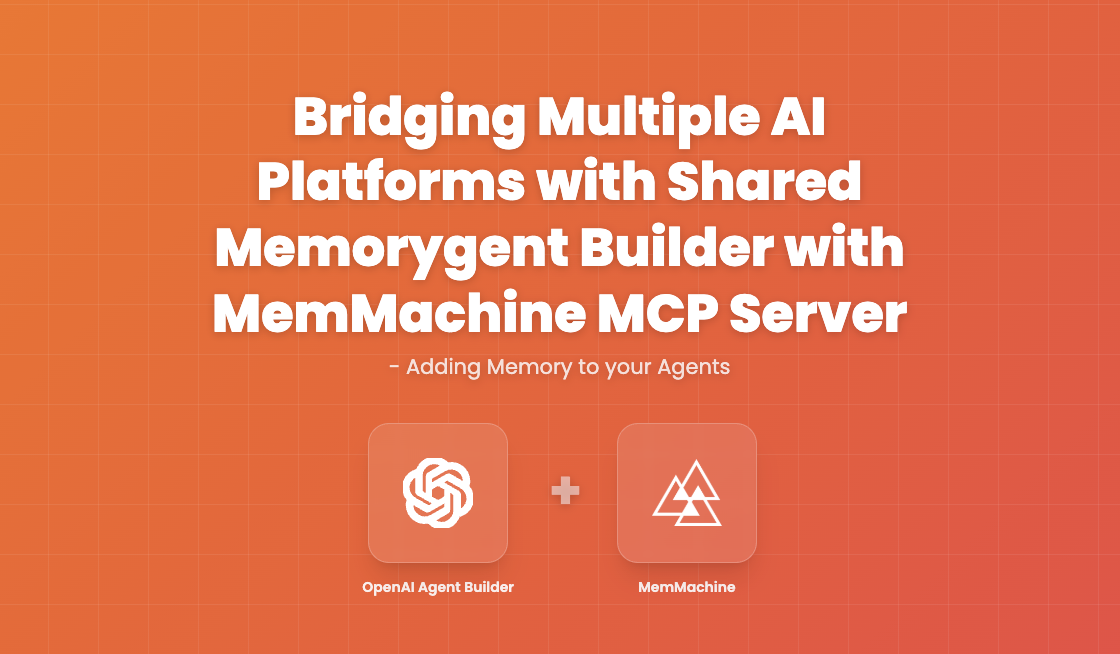AI agents are getting smarter, but there’s a critical challenge: how do you enable different agents across different platforms to share the same memory? What if your OpenAI workflow, Claude Desktop assistant, and custom agents could all access the same user context seamlessly? Working with Cedric Zhuang from the MemMachine engineering team, we’ve built a solution that does exactly that—using the Model Context Protocol (MCP) as a universal memory backend.
The Challenge: Memory Silos
Most AI implementations today suffer from memory fragmentation. Your ChatGPT conversation knows one thing, your Claude assistant knows another, and your custom workflow remembers something entirely different. This creates frustration for users who expect AI to remember context across platforms.
The solution? A shared memory layer that multiple agents can read from and write to, regardless of which platform they’re running on.
Enter MemMachine MCP
MemMachine’s MCP implementation acts as a universal memory Resource Server that any MCP-compatible client can connect to. By using a consistent MM_USER_ID (user identifier), different agents can access the same memory context, creating a truly unified AI experience.
In a previous blog post, we demonstrated how to integrate OpenAI Agent Builder with MemMachine MCP. Now, let’s explore how multiple AI platforms can share memory through MCP.
How It Works: A Hospital Demo
To demonstrate this capability, we built a simple hospital scenario with three distinct interactions:
Front Desk Workflow (OpenAI Agent Builder) The Front Desk Agent registers a new patient named John Doe, age 45, with contact 555-1234 and a chief complaint of headache. This information is stored using the add_memory tool with user ID patient-001.
Prompt: Patient John Doe, age 45, contact: 555-1234, chief complaint: headache
Doctor Workflow (OpenAI Agent Builder) The Doctor Agent retrieves the patient’s information using search_memory
Prompt: What is the patient’s chief complaint and basic info?
The doctor diagnoses them with a migraine, prescribes Ibuprofen 400mg three times daily, and schedules a follow-up in 2 weeks. All updates are saved back to the shared memory using the same patient-001 identifier.
Diagnosis: Migraine Prescription: Ibuprofen 400mg, three times daily Follow-up: In 2 weeks
Patient Query (Claude Desktop) Later, the patient opens Claude Desktop and asks for a second opinion. Because Claude is configured with the same MM_USER_ID (patient-001), it instantly retrieves the complete medical record—including the original complaint, diagnosis, and prescription—all through the same MCP endpoint.

The Key: Consistent User Identity
The magic happens through the user-id header. Every client—whether it’s OpenAI Agent Builder, Claude Desktop, or a custom application—uses the same user identifier when connecting to the MemMachine MCP server. This ensures that memory operations (add/search) are consistently associated with the right user context.
Setting Up the Integration
Prerequisites
- MemMachine MCP HTTP server running locally or remotely on port 8080
- ngrok to expose your local endpoint to the internet
- Access to OpenAI Agent Builder or Claude Desktop
Quick Start
Start your MCP server:
export MEMORY_CONFIG=/path/to/configuration.yml uv run python -m memmachine.server.mcp_http --host 0.0.0.0 --port 8080Expose it via ngrok:
ngrok http 8080Connect your AI platform to the MCP endpoint at
https://your-ngrok-url.ngrok-free.dev/mcp/Configure custom headers with
user-id: <your-user-id>
Available Tools
add_memory: Store new information to the user’s profilesearch_memory: Retrieve relevant memories based on queries
Why This Matters
This implementation proves that MemMachine MCP can serve as a universal memory backend across different AI platforms. The implications are significant:
- Consistent User Experience: Users get personalized interactions regardless of which AI platform they’re using
- Simplified Development: Developers can build multi-agent systems without worrying about memory fragmentation
- Scalability: Easily add more AI platforms to the ecosystem by simply connecting them to the MCP server.


